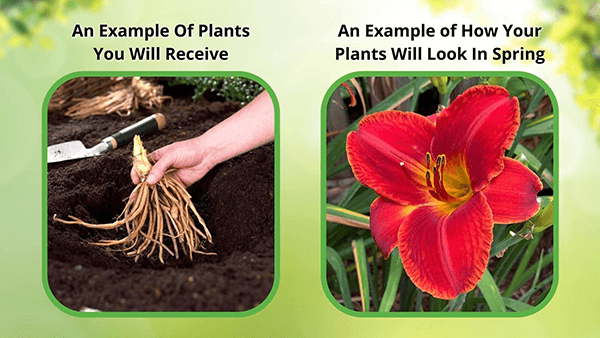Virginia Bluebells For Sale
The Virginia bluebell is a deciduous, spring ephemeral perennial that offers bell-shaped blooms draping from brilliant green stems surrounded by large leaves. They bloom in the Spring season and their cycle lasts up to 6 weeks. They grow in woodlands and deep forests and are perfect for your garden. It is a great treat to get to see these blooms before they are gone for the season! Don’t chase them at your local arboretum. Grow your own and you will never miss them again.
Virginia Bluebell Plant Details
Family: Borage (Boraginaceae)
Light Requirement: Shade
Water Needs: Average/Moist
Height: 1 - 2 ft.
Growth Rate: Fast
Bloom Time: Spring
Flower Color: Blue
Wildlife Value: Attracts bees and butterflies
Landscape Uses and Maintenance
With its small, compact size, this perennial can fit anywhere in your garden. It is great for the border, rock garden, and mixed with other shade-loving perennials, like Dutchman’s breeches, trillium, or toad lily. This plant enjoys dappled sunlight, so keep it shaded rather than scorching in full sun. Beautiful, sloping flowers are a wonderful native addition to your garden.
A low-maintenance shade perennial favorite! This is an excellent plant for all levels of gardeners, from the eager novice to the more experienced. It will thrive in rich, well-drained soil and, once established, needs very little care. No fertilization is necessary. Get the best bang for your buck -- good news for the frugal gardener! This is a colonizer that will make larger clumps in the garden over time, spreading over an area.
Noteworthy Characteristics of Mertensia Virginica
When the Virginia bluebell's leaves initially emerge, they are deep purple and fade into lush green. The growth of gently sloping flowers quickly follows the stems that erupt with pastel blooms.
These flowers begin as a soft pink, change to purple, and finally bloom into a gorgeous, powdery sky blue. Blue is the rarest color in nature – stun your friends when they visit! Some varieties may include white.
As spring ephemerals, Virginia Bluebell bloom in the springtime and then disappear for the rest of the season. Interplant with Solomon’s seal or ferns to reduce the empty spaces left behind when the leaves die back.
Exposure
Virginia Bluebells (Mertensia virginica) thrive in partial to full shade, making them ideal for woodland gardens. They prefer dappled sunlight but can tolerate early morning sun. Too much natural sunlight can push the leaves to wilt or scorch.
Height at Maturity
Under 12"
Usage
Shade Plant
Shipped As
Bare-root
Ships
USPS
Planting Zones
3-9




